Best Winter Hikes in Banff National Park
Growing up in the Greater Pacific Northwest, I thought I already had it all here in Washington State. The various shades of greenery, vivid blue alpine lakes, & majestic mountain ranges are abundant making it a hiker’s paradise! Come winter, those same summer trails transform into a magical winter wonderland & it becomes a whole new experience like no other! But when I entered Canadian territory, more specifically Banff National Park in the Alberta province, my mouth literally dropped! I was in awe of the first sight of the Canadian Rockies with its massive snow-capped peaks. As soon as we picked up our rental car, we headed straight for the mountains. Much like my home state, I found there was a trail for any skill level & all age groups! Here I share a brief guide to the best winter hikes in Banff National Park to plan for your next great adventure!

Please note: This post contains affiliate links.
This means that, at no extra cost to you, I may receive a small commission if you make a purchase through my affiliate link.
You may read my full disclosure policy here.
Johnston Canyon
📈 AllTrails rating: Easy
🥾 Length: 1.4 miles RT for Lower Falls & 3.3 miles RT for Upper Falls
🏔️ Elevation gain: 344 feet for Lower Falls & 862 feet for Upper Falls
✅ Banff National Park Pass or Discovery Pass (access to more than 100 Canadian National Parks, marine conservation areas, & national historic sites) required
Johnston Canyon has long been on my Canada bucket list after seeing photos of its magical frozen waterfalls & deep canyons. The short, easy winter hike in Banff makes the perfect first destination to break you into the Canadian wilderness! Located just off of Bow Valley Parkway, its accessibility makes Johnston Canyon a favorite among avid ice climbers & families with children. In the summer time, the trail becomes quickly crowded with locals, tourists, & photographers alike! So prepare to arrive early!
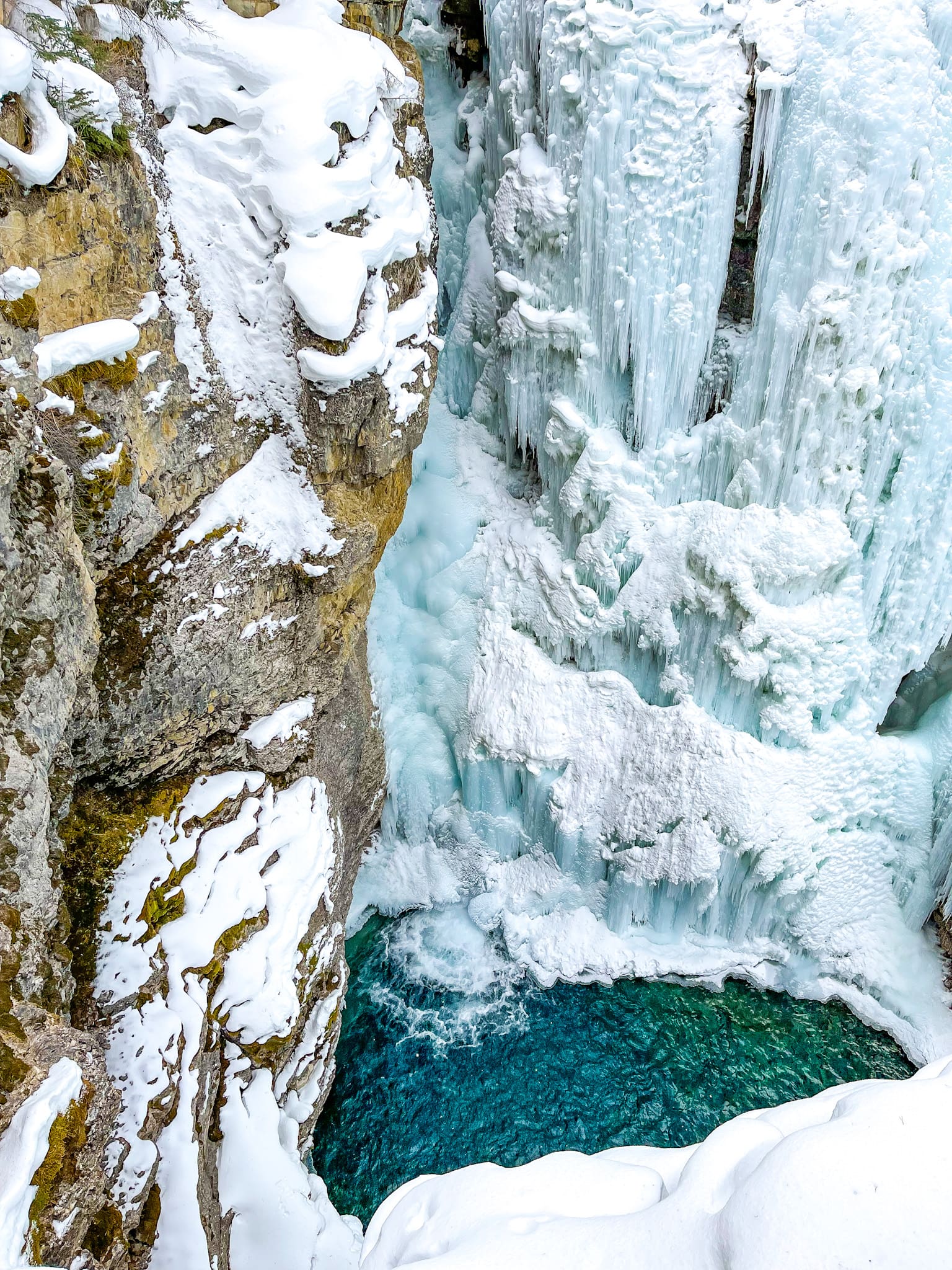

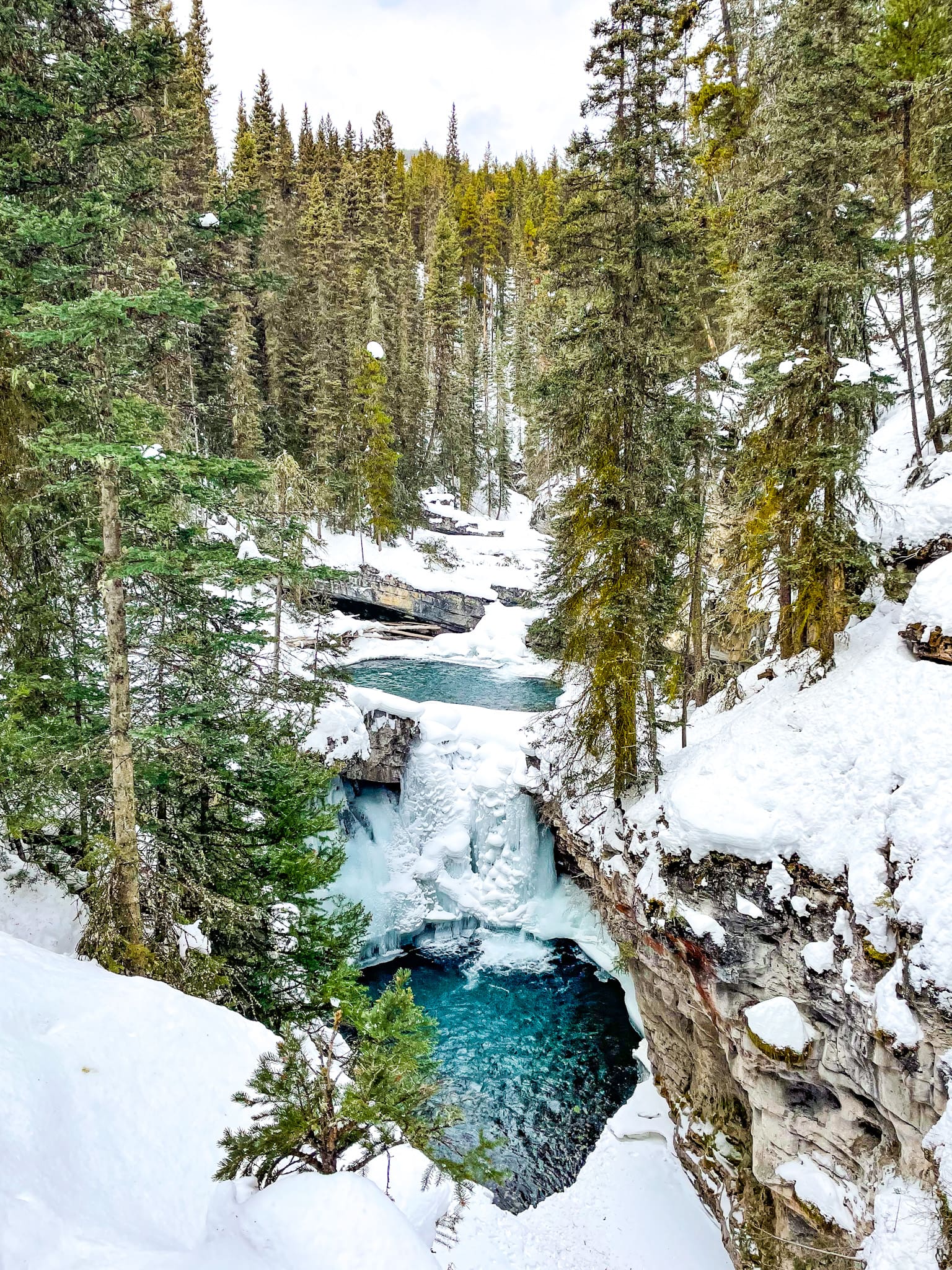
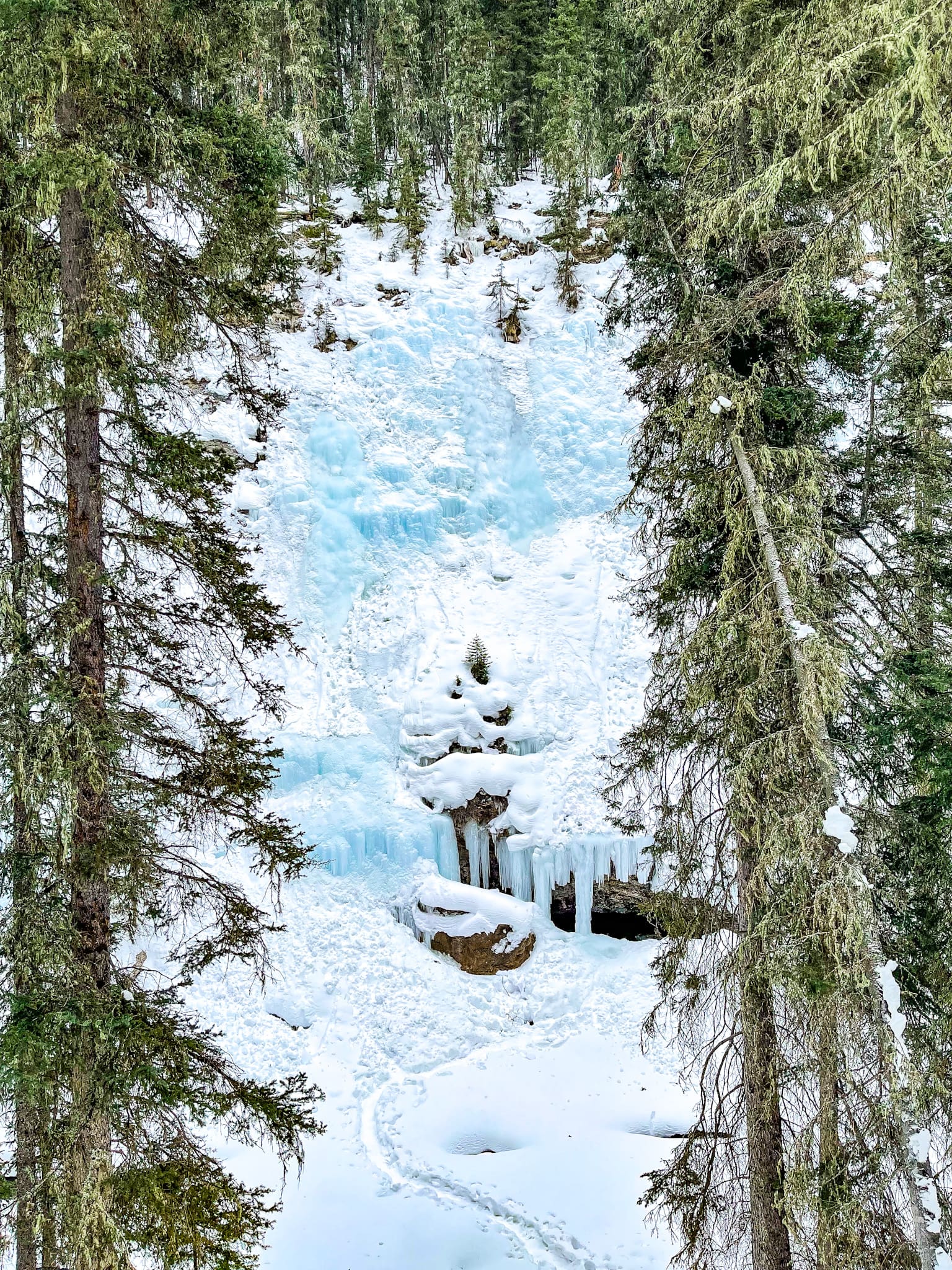
The hike starts at the parking lot right next to the Johnston Canyon Lodge & Bungalows, known as one of the best rental cabins in Banff. You’ll enter a forest that follows along Johnston Creek with several viewing platforms for amazing photo opportunities. While the incline is gentle, it can get icy in some areas. So be sure to use the safety guardrails & bring proper winter footwear to keep you from slipping.
As you near the Lower Falls, you will come across a small cave that provides a different vantage point of the waterfall. Watch your footing & cover yourself as you duck under here! If you have time, continue further to the Upper Falls & another 1.9 miles to view the Ink Pots, which are unique mineral springs that bubble at the surface! In warmer seasons, these blue pools are a sight to see with a backdrop of a lovely alpine wildflower meadow. However, in the winter, it may not be worth the extra trek.
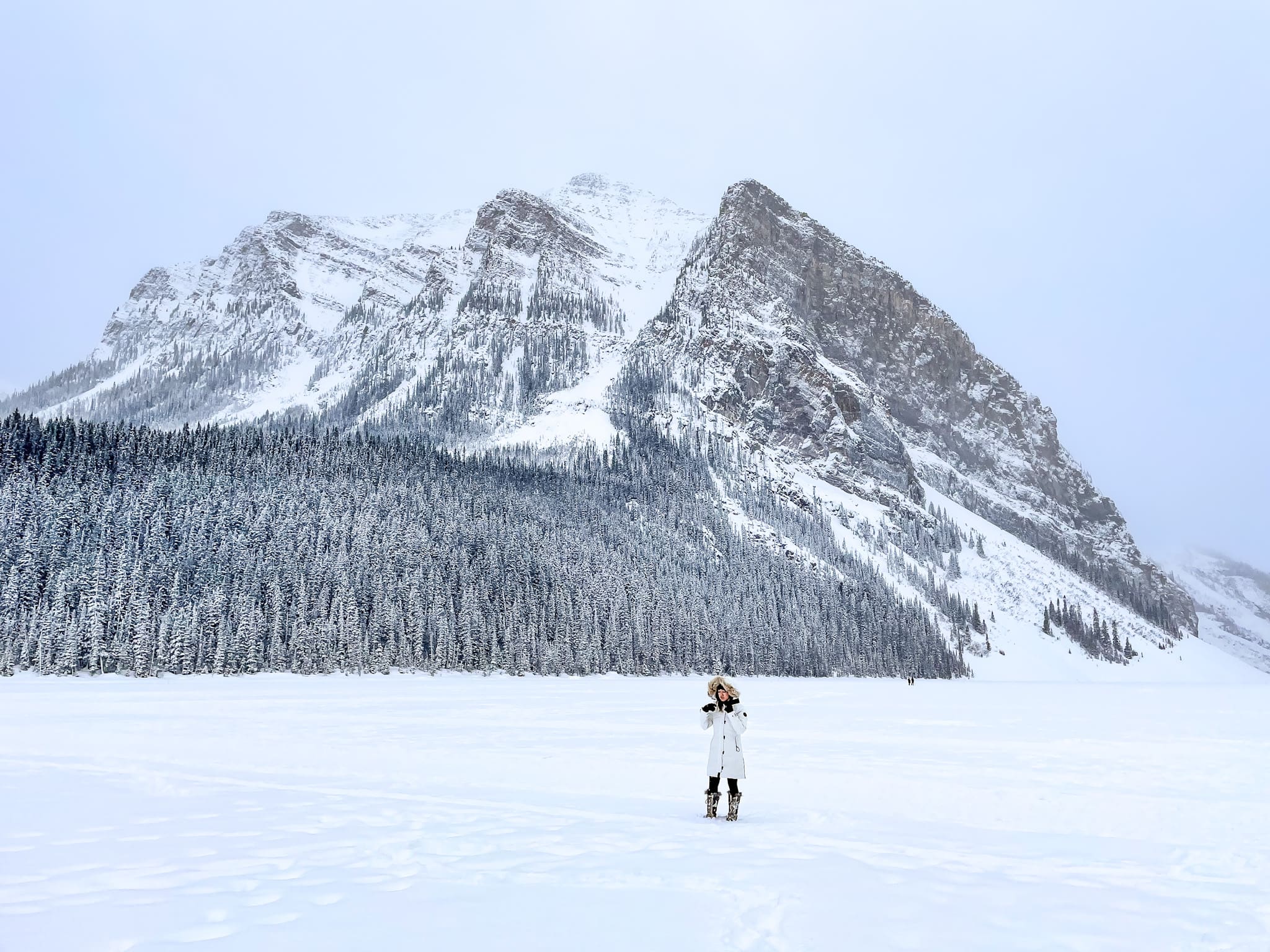
Lake Louise Lakeshore
📈 AllTrails rating: Easy
🥾 Length: 2.8 miles RT
🏔️ Elevation gain: 354 feet
✅ Banff National Park Pass or Discovery Pass required
Lake Louise is the epitome of Banff National Park! During warmer months, its gatorade blue glacial waters & spectacular mountain backdrop bring tourists & photographers from all around the world! In the winter, the lake freezes over becoming an ice skater & hockey lover’s delight. You simply cannot complete a trip to Banff without visiting Lake Louise & there’s no better way to experience it in winter than to hike along its lakeshore.
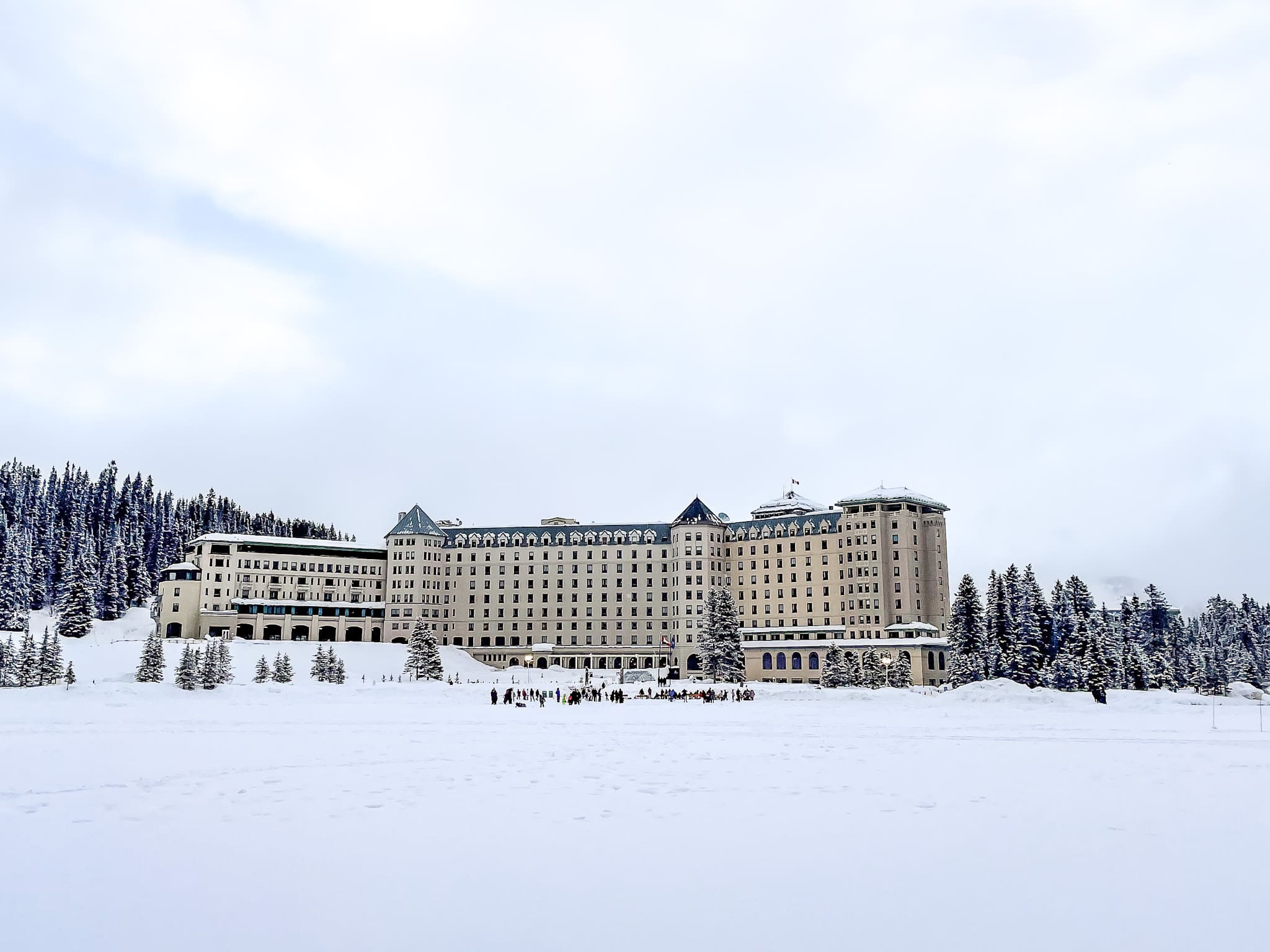
Conveniently located right next to the luxurious Fairmont Chateau Lake Louise, Lake Louise also serves as the starting point for several hiking trails including the summer favorite Lake Agnes Tea House (more details down below)! Lucky hotel guests don’t have to worry about finding a parking spot in the overflow lot. Others will have to plan to arrive before dawn to find a spot among the masses hoping to catch an epic sunrise.
No matter what time of the year you visit Lake Louise, be sure to explore the path along the lakeshore. As you walk further away from the Fairmont Chateau, you will face amazing views of Collier Peak and Mount Victoria. The trail is well-paved majority of the way before it transitions to a dirt path. At the end of the trail, there is a dedicated area for sledding that also provides incredible glacier views. In the summer, you may notice rock climbers & mountaineers venturing further past the Lake Louise shoreline where the waters turn milky white from the glacial rock silt!

Big Beehive via Lake Agnes Trail
📈 AllTrails rating: Hard
🥾 Length: 6.7 miles RT
🏔️ Elevation gain: 2,552 feet
✅ Banff National Park Pass or Discovery Pass required
Lake Agnes Trail is easily one of the top winter hikes in Banff National Park as its trailhead is located right next to the picturesque Lake Louise. Oftentimes, parts of the trail close due to avalanche risks so be sure to check the forecast ahead of your trip. We experienced a lot of snowfall during our stay at the Fairmont Chateau, so we hiked only up to Big Beehive.
With a decent elevation gain of 3.4 miles, the trail has a rating of moderate to difficult but is a great challenge for all skill levels. In the summer, the trek provides beautiful views of Mount Victoria, Collier Peak, & Popes Peak that align with Lake Louise’s turquoise waters below.
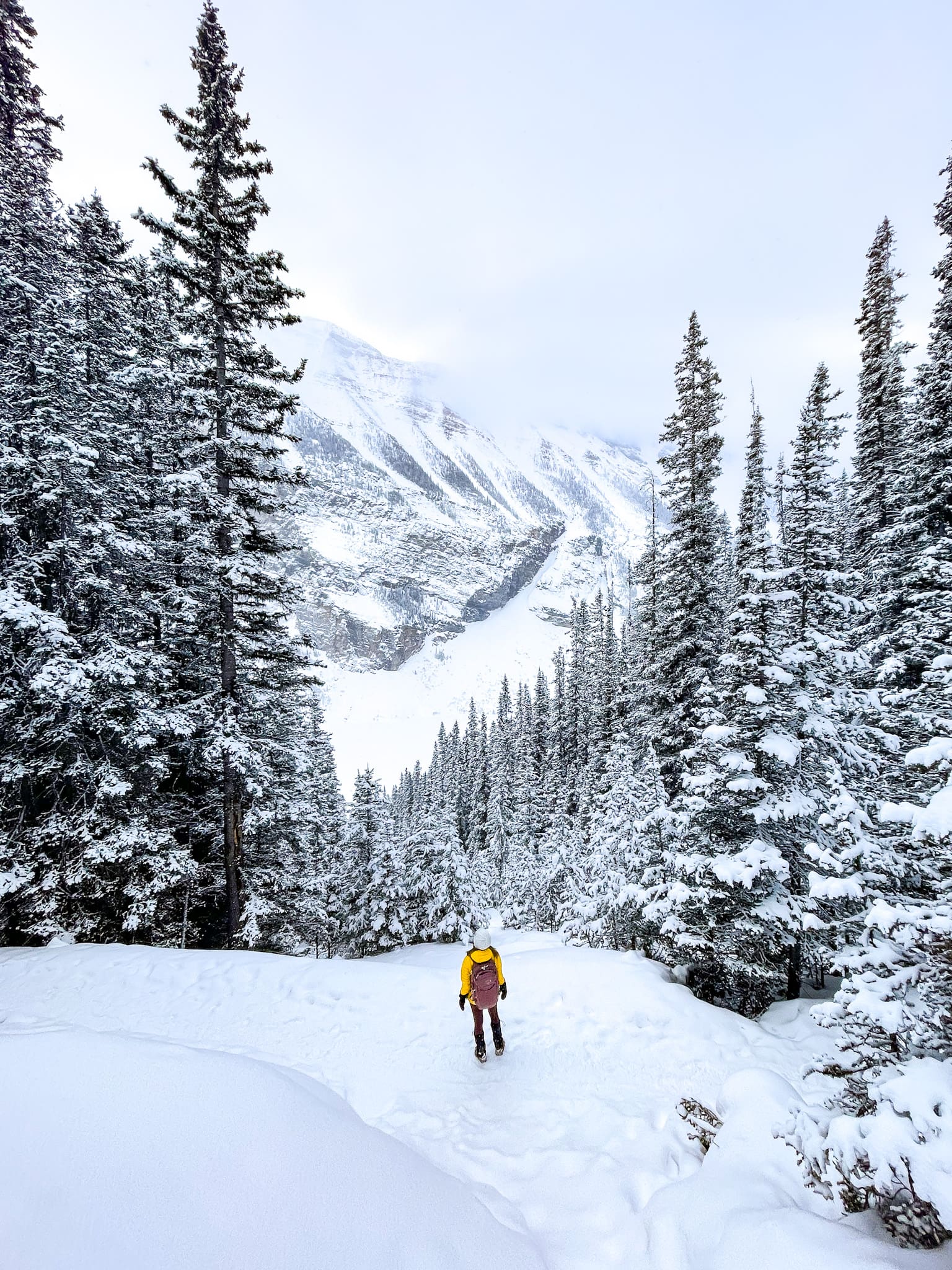
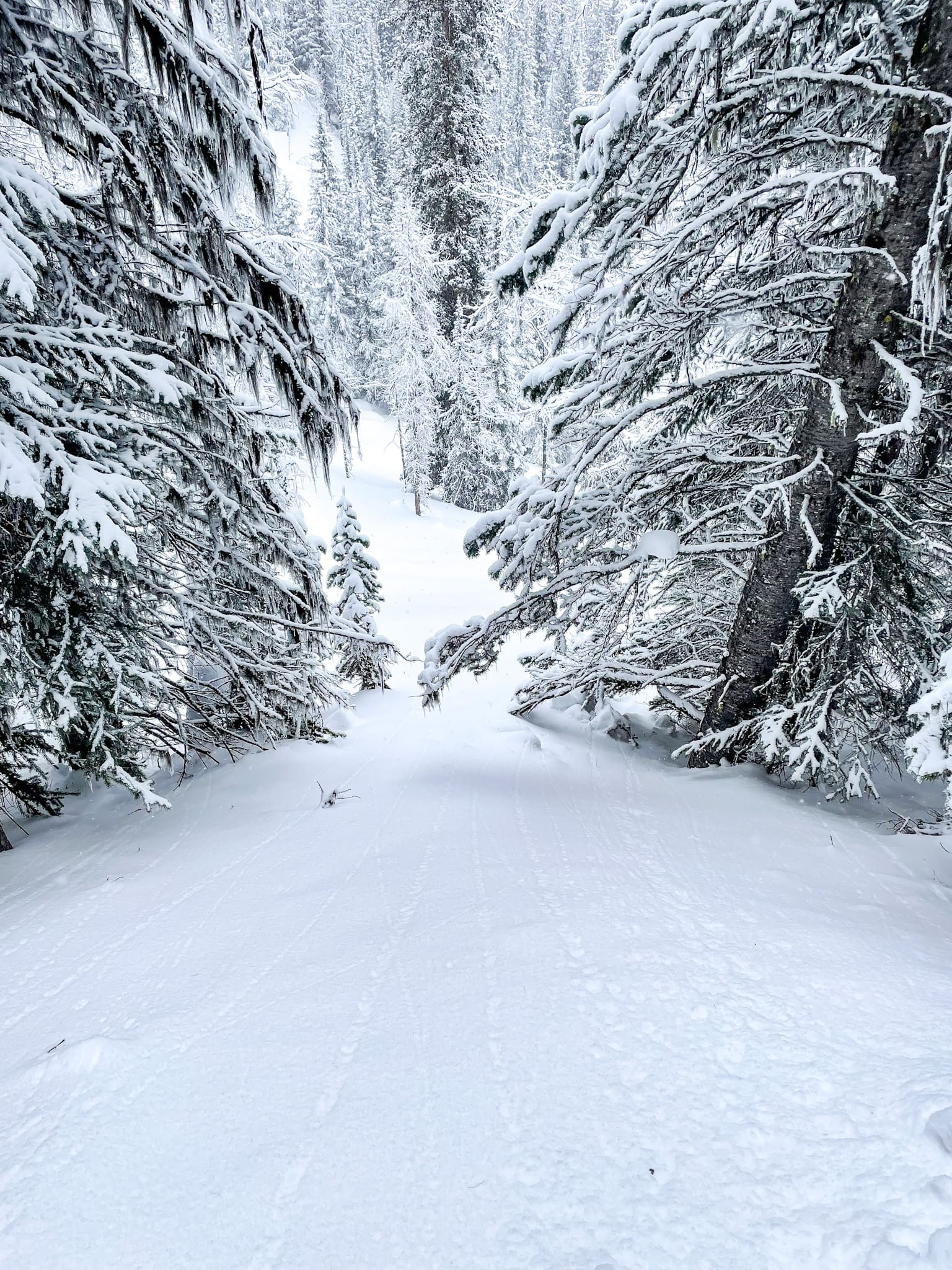
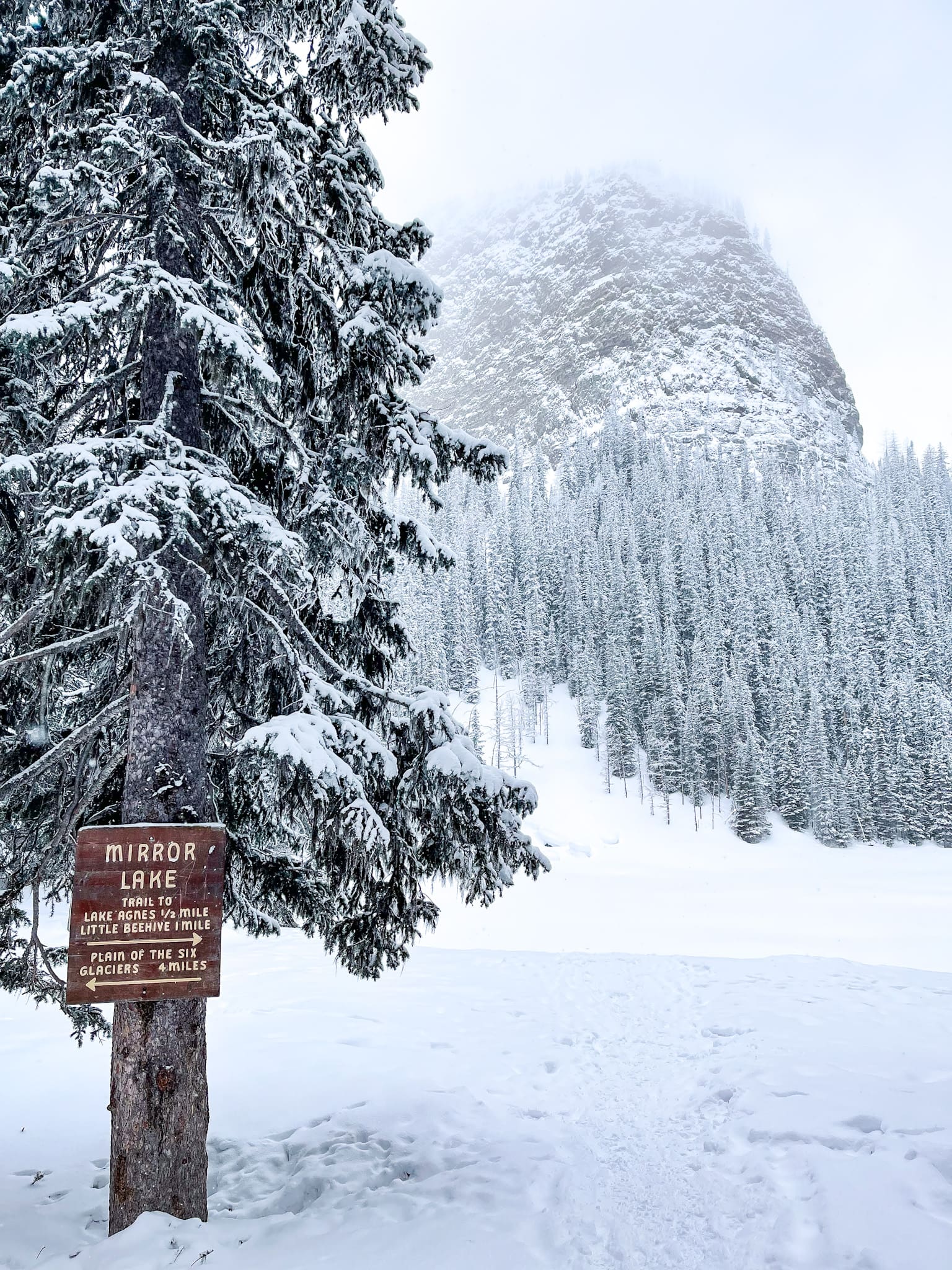
The trail starts off as a steady climb but nothing too steep nor precarious. About 1.75 miles in, there is a trail junction at Mirror Lake, a small pond set beneath the shadow of the Big Beehive. Here you will have your first “ah-ha” moment of how the Big Beehive got its name!
If you choose to check out the Little Beehive to complete the Beehive Circuit, you must hike another 1.8 miles to the right of the junction. But if your main goal for the day is to get to the Big Beehive, continue to the left of the trail for about 0.6 miles towards Lake Agnes. Here, you will encounter several short switchbacks up scree-covered narrow slopes. When there’s significant snow, this area becomes sketchy avalanche chutes, so be careful.
Take a tea break at the historical Lake Agnes tea house.
During the summer, there is an operating historical tea house along the lakeshore that provides the perfect spot for a snack break. The backcountry log cabins were originally built in the early 1900’s to service the Canadian Pacific Railway. Now it is a popular destination for adventurers looking for a unique dining experience in the mountains! Just remember to bring cash (no credit cards accepted) & a whole lot of patience as the tea house gets really busy! Also keep in mind, this is not an all-inclusive restaurant as they only serve small sandwiches, soup, pastries, & NO COFFEE!
Continuing on from the tea house, cross the large flat rocks on to your final path towards the Big Beehive. After a series of grueling 8 switchbacks up 447 feet, you will arrive at a four way junction that also branches off towards two more challenging trails, Devil’s Thumb & Plain of Six Glaciers. Veer left & after a short 0.3 miles, you will finally reach one of the most breathtaking viewpoints of Lake Louise!
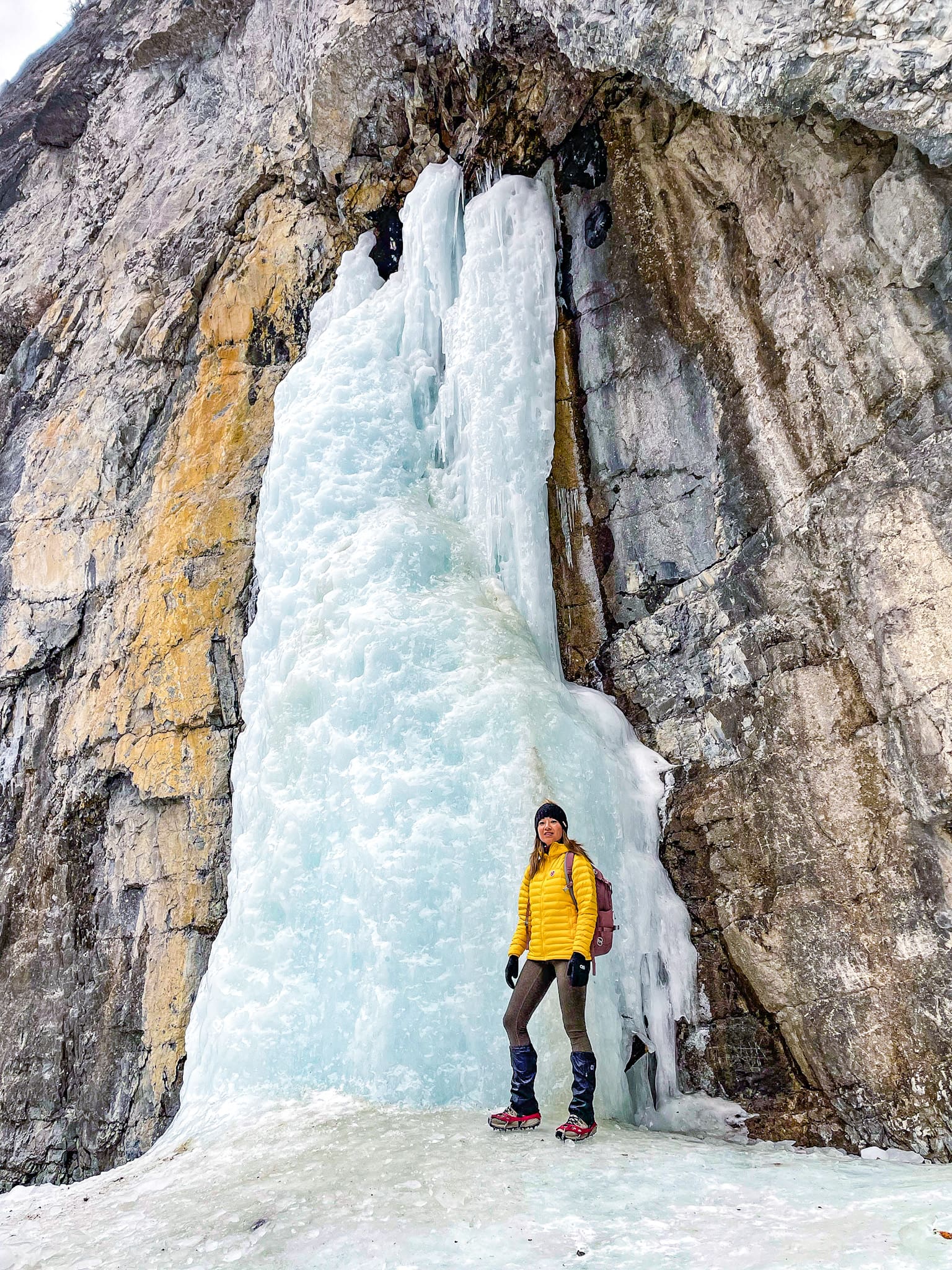
Grotto Canyon Trail
📈 AllTrails rating: Easy
🥾 Length: 4.4 miles RT
🏔️ Elevation gain: 1,295 feet
✅ Kananaskis Conservation Pass required
Have you ever hiked on top of a frozen creek bed? Located in the shadow of Grotto Mountain by the scenic Bow Valley Provincial Park near Canmore, Grotto Canyon trail is an easy 4.4 mile hike with incredible views. Under frozen conditions, the shallow creek at the bottom of the canyon turns into an ice walk making it a unique winter hike in Banff. So don’t forget to pack your microspikes!
The beginning of the hike follows along power lines next to the Baymag Mineral Processing Facility. This large industrial plant processes magnesite into magnesium oxide that is used in wastewater treatment & acid neutralization. The first viewpoint has a bench that overlooks views of nearby peaks. Continue on the path & you start to notice a nice elevation gain as you reach the frozen creek bed.

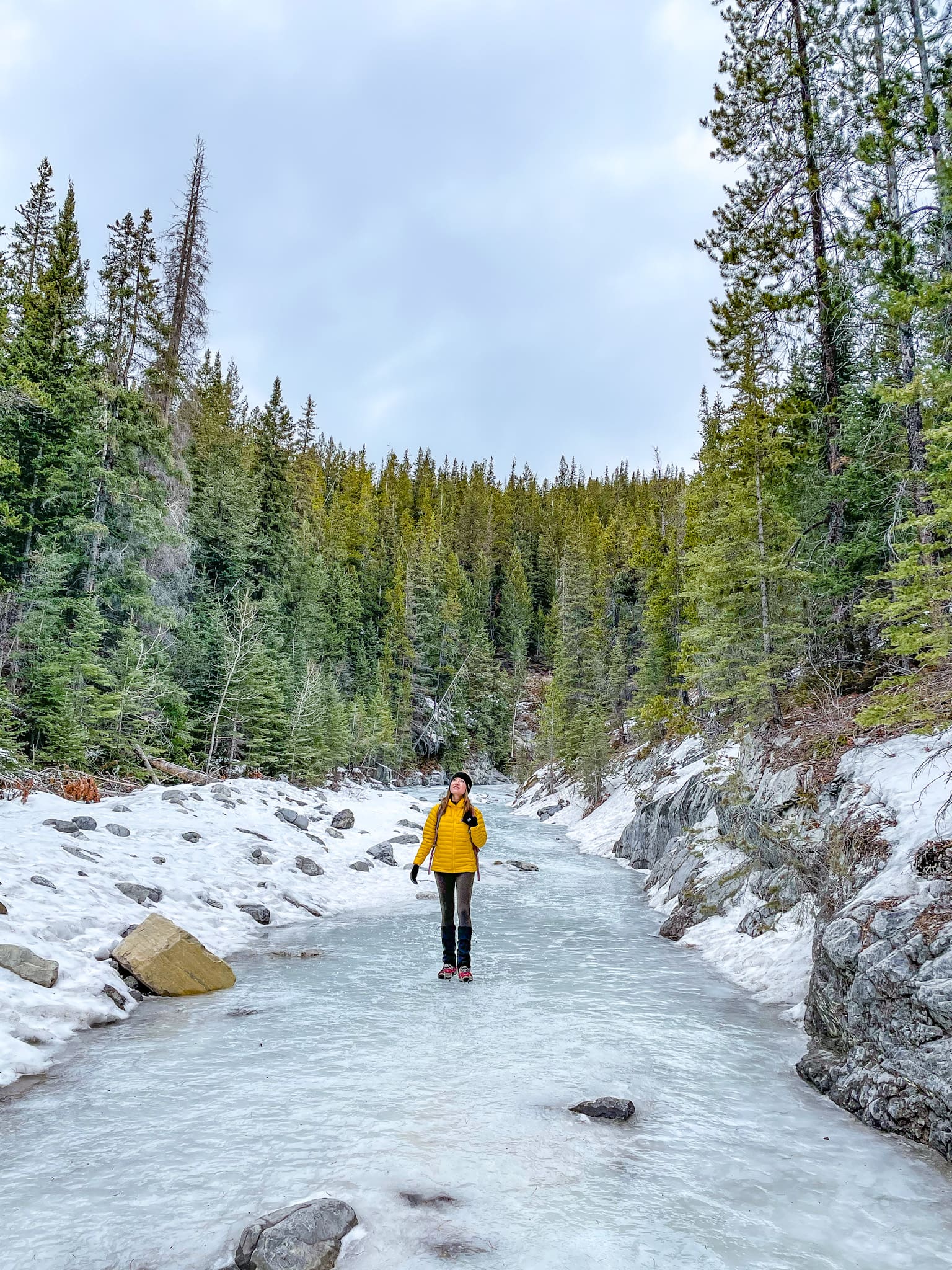
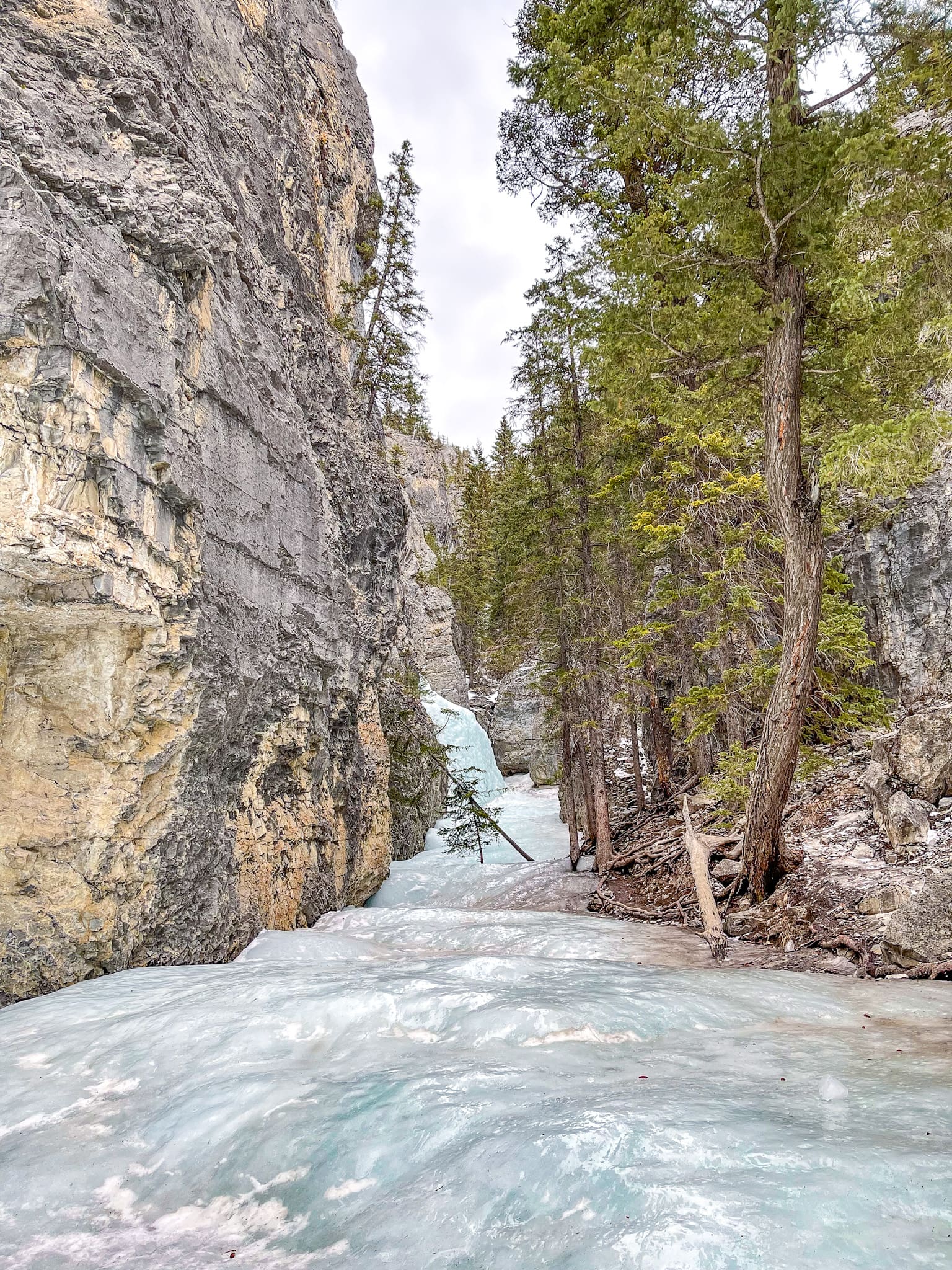
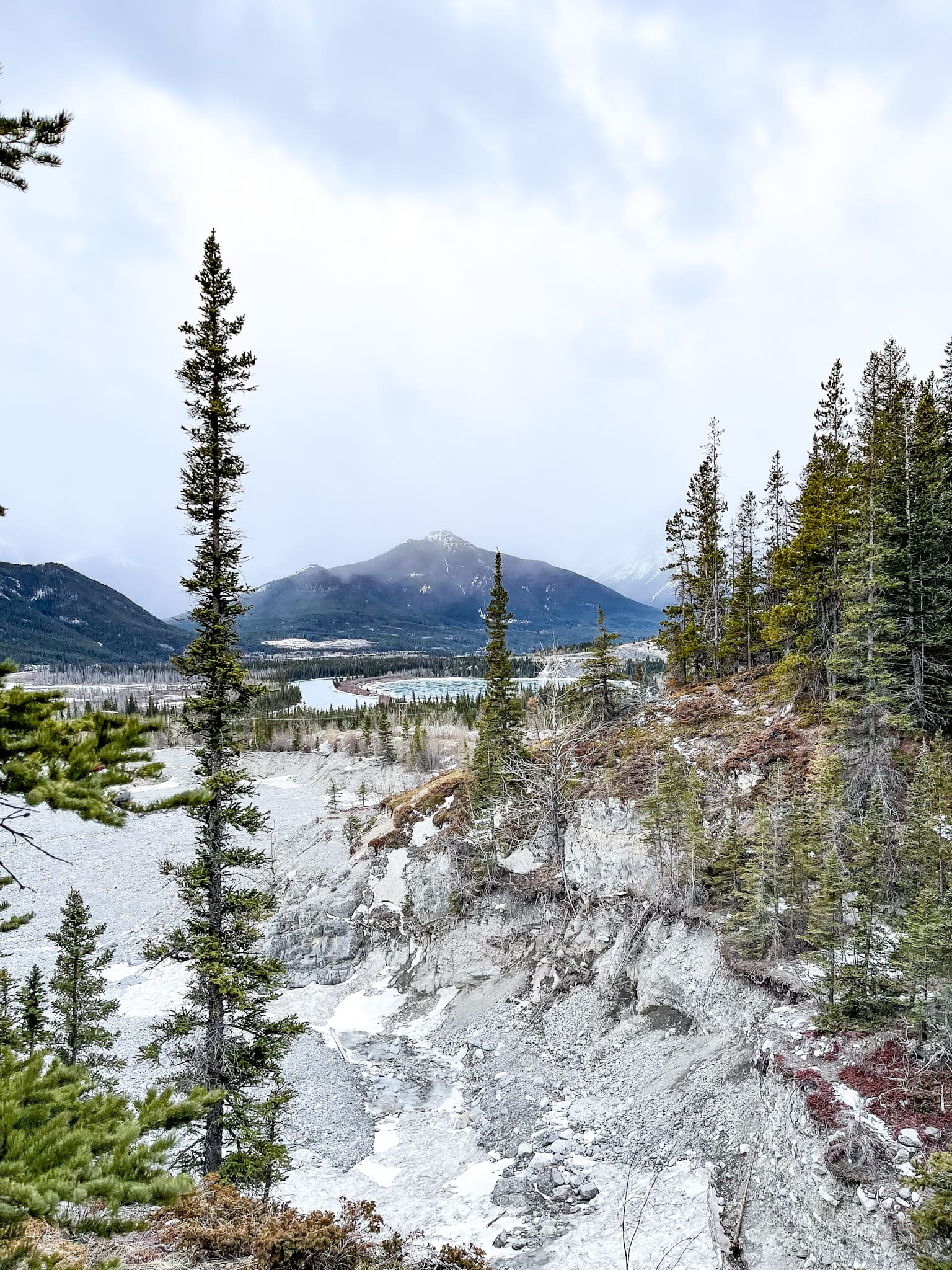
As you walk along the dramatics canyon walls, look for Hopi pictographs carved into the limestone. Archeologists believe that the ancient artwork was left behind 500 to 1,300 years ago! About halfway through, you will come across your first frozen waterfall followed by an Inukshuk Garden & ice cave! At this point, most hikers return back from where they came from. Or you can continue west through the canyon to reach an open space with more panoramic views of the mountains once inhabited by the Inuit people.
During your hike, keep an eye out for ice climbers as Grotto Canyon is a popular area for the Calgary climbing community. For your own safety, never walk near or under the ice climbers as chunks of ice can easily fall off. Do not distract the belayer holding the rope at the bottom & observe quietly from a distance.
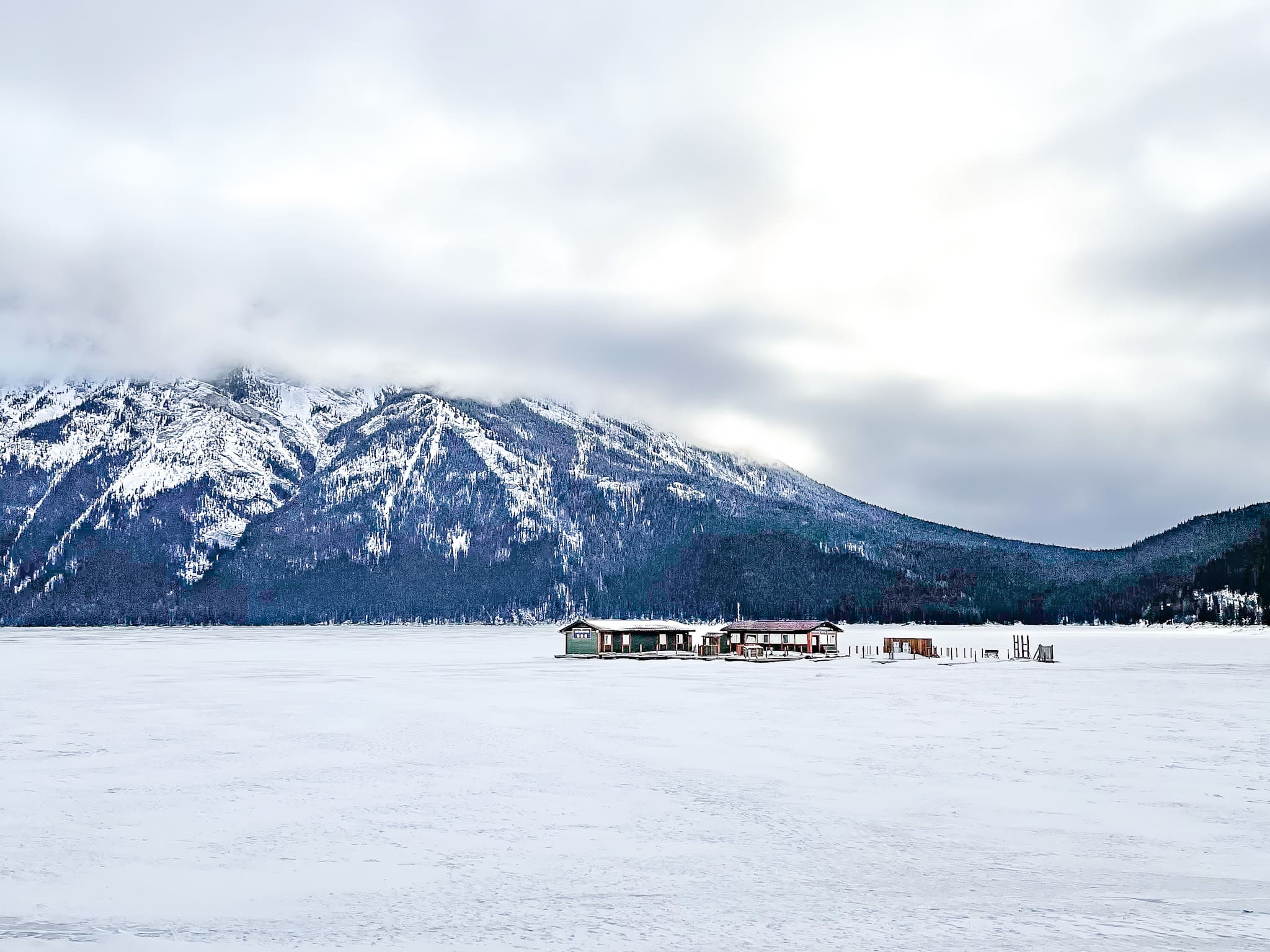
Lake Minnewanka Trail
📈 AllTrails rating: Moderate
🥾 Length: 9.7 miles RT
🏔️ Elevation gain: 1,656 feet
✅ Banff National Park Pass or Discovery Pass required
Would you dare hike across a haunted frozen lake? The indigenous Stoney Nakoda people used to call Lake Minnewanka, “Minn-waki” or “Lake of the Spirits”. They respected the mysterious lake for all the life it has given them, yet feared its resident spirits. In the late 1800’s, Europeans arrived in Canada & stole the native land to build their own towns, including a small village named Minnewanka Landing. Legend says the spirits of the lake swallowed these settlers whole as a consequence! Today, only a few scuba divers have actually seen the underwater ghost town. Some visitors of the lake even claim to hear supernatural noises rising from the depths of the waters!
“This is a not a site to wander alone in unless a person is blessed for such a mission, as spirits wander here without regard for those who hike this land.”
Linda Dunning from Lost Landscapes
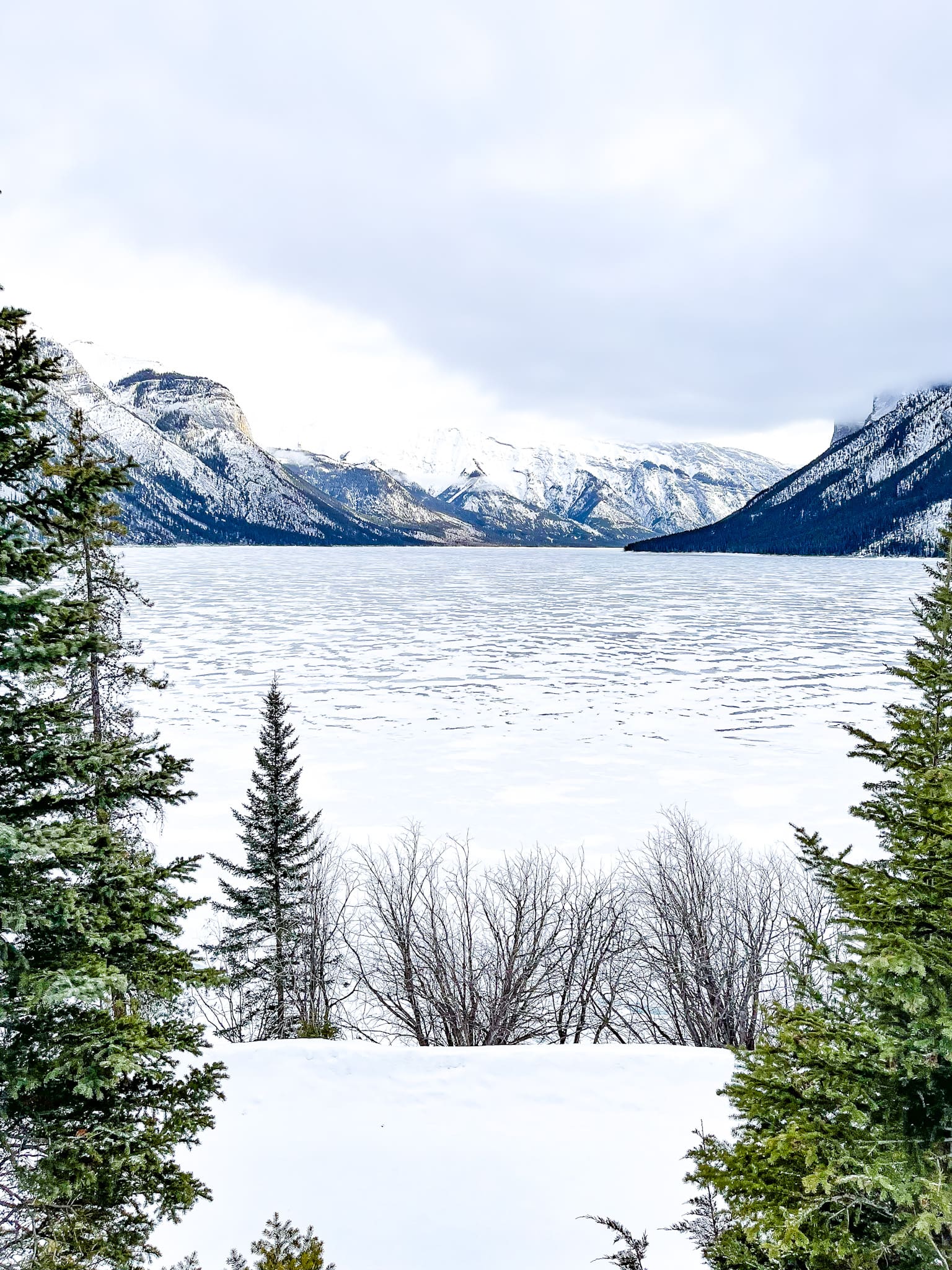
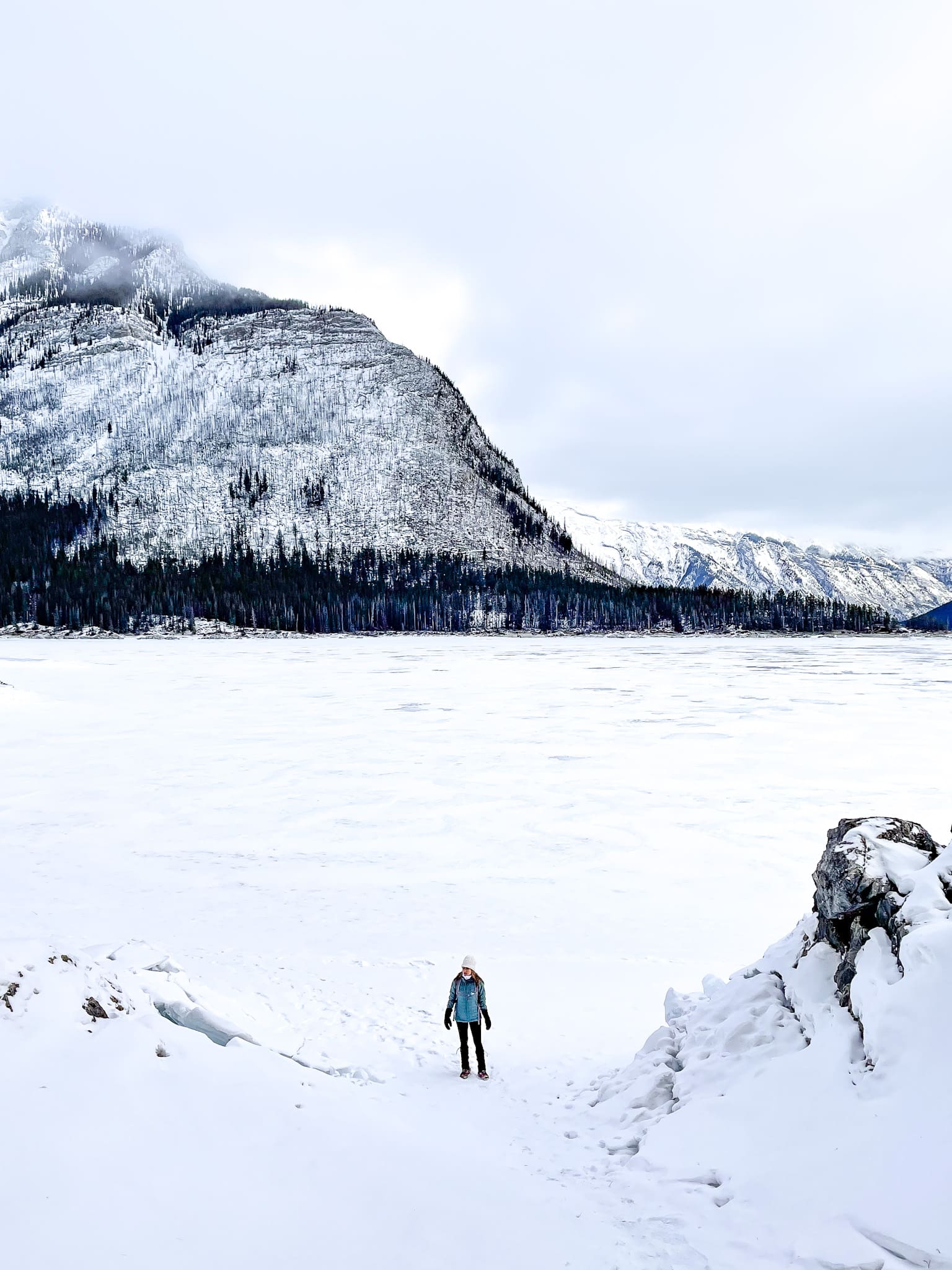
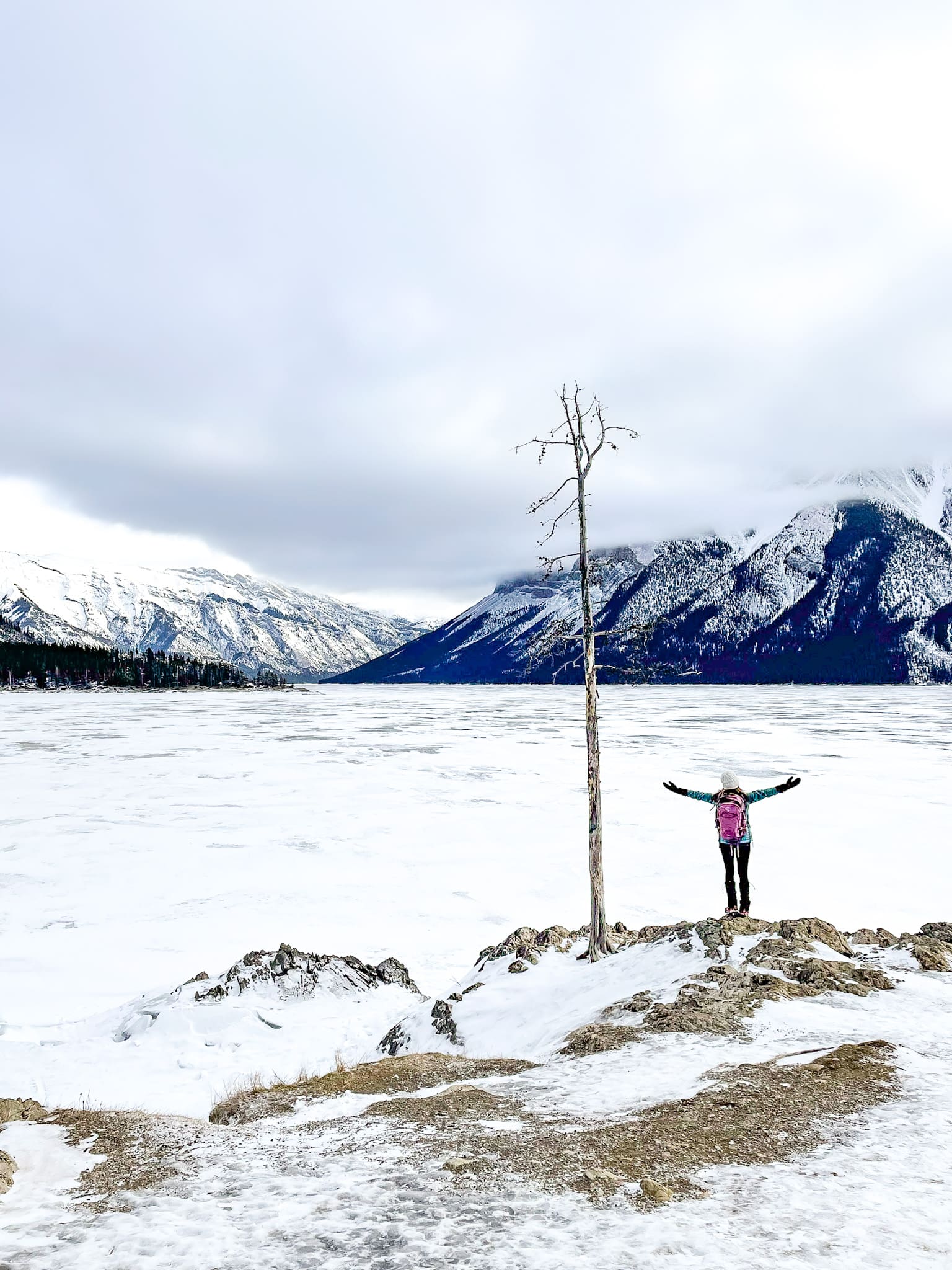
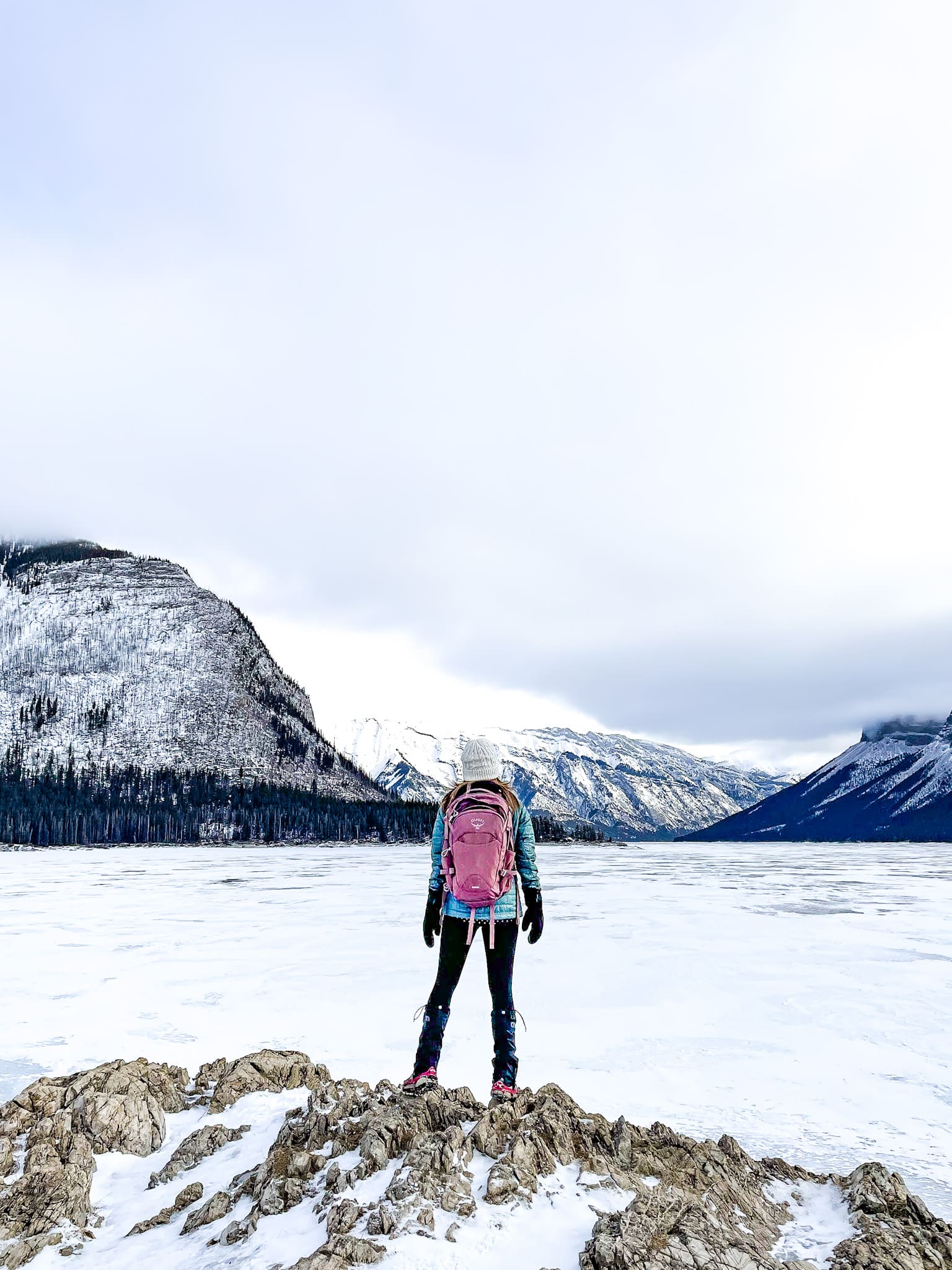
A lake enjoyable for all seasons & activities.
Folklore aside, Lake Minnewanka is a must-visit winter hike just outside of Banff. In the summer, the lake is frequently utilized for swimming, fishing, canoeing, & even horseback riding. When the lake freezes over in the winter, many people enjoy ice skating & snowshoeing along its shore.
Similar to Lake Louise, Lake Minnewanka is a common trailhead for various other hikes including the quieter Stewart Canyon Trail and the more challenging Aylmer Lookout. Because of its multi-use all year round, you will come across several campgrounds & accessible points of interest. The majority of the path takes you through a shaded forest with many creek crossings & viewpoints overlooking the lake. There are a couple of narrow spots with tight corners that may become hard to navigate especially in snow. But overall, the trail is very well maintained.
While the stats listed above are for the shorter version of the trail, you can also hike the entire north shore up to Ghost Lakes for a total of 36.3 miles. To complete the full trail, park rangers require groups of at least four adults & arming one person with bear spray.
Angella’s Travel Tips
- In the winter, many roads are subject to seasonal closure due to increased snowfall. Additionally, travel times may be limited in the spring to ensure a higher quality of life for the animals. Be sure to check the latest local road conditions & the Parks Canada website for more planned closures before heading out.
- With the amount of snow Canada receives every winter, there is also high avalanche danger once temperatures start to drop. Stay up to date on the avalanche forecast & be fully prepared with avalanche safety tips.
- Even if planning for an easy winter hike in Banff, you should always pack proper winter hiking gear. Much like the Pacific Northwest, the weather in Canada can change at any moment’s notice. A definite winter essential is a reliable pair of microspikes to give you extra traction on slippery trails. It is also wise to bring along an outer protective shell in case it rains or snows. Don’t forget to pack warm winter gloves & wool socks to keep your extremities from freezing!
- In an effort to preserve the wild in our ‘wild’erness, it is important to be conscious of the effects our actions may have on public lands, the animals, & even other nature enthusiasts. The 7 Leave No Trace principles provide a framework for enjoying the outdoors while leaving the smallest footprint possible. Learn more about how you can apply the Leave No Trace principles on your next adventure to help protect the beautiful places we all love so much.


Leave a comment